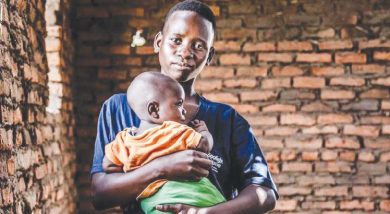Droughts, floods and hunger
Henga Valley in Rumphi has been a food basket for many years. Despite the rich alluvial soils from neighbouring highlands, it has been marked by acute hunger for last three years.
In Zimakazi Village, Elina Mhango’s crop yield has been dwindling every year due to dry spells.
“It was worse last year. Fall Armyworms attacked my one-acre maize field. I harvested just a quarter of what I expected,” she says.

For her, it was a double blow.
The armyworms destroyed 375 580 hectares of maize belonging to one million farmers nationwide, according to the Ministry of Agriculture, Irrigation and Water Development.
As a result, maize production slumped by 21.1 percent from 3 464 139 metric tonnes (MT) to 2 697 959 MT.
The Malawi Vulnerability Assessment Committee (Mvac) estimates that nearly 3.3 million food insecure Malawians will require food aid totaling 138 488 MT, worth K20.8 billion.
The bad news for the Mhangos is that there seems to be no end to the food crisis.
The Department of Climate Change and Meteorological Services forecasts that impending El Nino will cause some dry spells in the North and floods in parts of the South in the 2018/19 growing season.
International Food Policy Research Institute (IFPRI) researcher Dr Grace Kumchulesi is worried that the country experiences food shortage every year.
The institute estimates that an average of two million Malawians need food assistance every year.
“The figures fluctuate every year,” says Kumchulesi. “In recent years, these numbers are increasing, especially in 2016/17 where we found that about 40 percent of people in the country were in need of food assistance.”
Kumchulesi says Malawi needs to address food insecurity to achieve Sustainable Development Goal (SDG) two—ending hunger and malnutrition by 2030.
Malawi has the highest food insecure population in Southern African Development Community (Sadc), where 29 million people need food relief.
Kumchulesi says there is more to perennial food insecurity than just agricultural problems.
“We need also to pay attention to rapid population growth and climate change,” she says.
Civil Society Agriculture Network (CisaNet) programmes director Alfred Kambwiri says the Farm Input Subsidy Programme (Fisp) has failed to address the problem as it benefits the same people targeted by relief food items. So, it is not solving the problem of food insecurity.
“The Mvac clearly outlines that the Southern Region districts are the worst hit districts almost every year. So, we need to find lasting solutions in mitigating the impacts of climate change,” he says.
As crop fields dry, Find Your Feet (FYF) executive director Chimwemwe Soko urges farmers to adopt sustainable agriculture technologies to improve soil fertility and harvest water for use during droughts.
The climate-smart techniques farmers can adopt include Conservation Agriculture (CA), pit planting, agroforestry, zero tillage, crop rotation, intercropping and use of locally made manure.
“With climate change, we see enormous challenges in communities. This impacts rain-fed agriculture. When an area receives little rains, farmers end up experiencing hunger throughout the year,” says Soko.
Shortage of extension workers in rural areas slows efforts to sensitise farmers to smart climate agriculture technologies. To fill the gap, FYF and other organisations have trained outstanding farmers to take up the role of extension workers. In areas with vibrant lead farmers, farmers are improving their harvest, calling on other stakeholders to duplicate the concept in all corners of the country.
“A combination of these interventions is helping alleviate challenges that farmers are experiencing due to climate change,” he says.
Centre for Multiparty Democracy (CMD) is among nongovernmental organisations petitioning hard for government to take the Right to Food and Nutrition Bill to Parliament to eliminate corruption, misprocurement and misallocation of resources in national food programmes, including social cash transfers and Fisp.
For CMD programme officer Cydric Damala, access to food is a birthright like any other.
“It is the responsibility of government to ensure that food is available to all Malawians, particularly to vulnerable groups. But past trends have shown that food is usually politicised. It is not looked at as a right.
“The Right to Food Bill seeks to regulate food as a human right. We don’t want people to die of hunger,” he says.
As another spate of hunger looms, Ministry of Agriculture, Irrigation and Water Development spokesperson Osborne Tsoka says government gives out relief items to victims of disasters but also intensifies efforts for farmers to venture into irrigation farming.
Meanwhile, government has put in place the Zero Hunger and Malnutrition Strategic Review (ZHMSR) to determine gaps in the national food security response and identify priority actions towards achieving SDG2.
The findings will inform the plans of national and international stakeholders, including World Food Programme and other United Nations (UN) agencies, to foster action on nutrition and food security.
Former State vice-president Justin Malewezi leads ZHMSR advisory board.
He says: “The main issue that is coming out is that we are making progress in nutrition. But the main challenge is on food security. The report reveals that if we go on business as usual we will not achieve SGD2.
“We need to change certain things in our agricultural processes: we have to introduce more agro-processing, we have to open up and strengthen the markets so that food is available and we need to create jobs so that people are able to buy food when they need it.”





